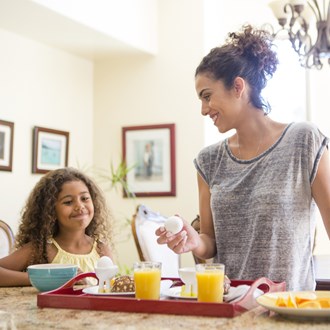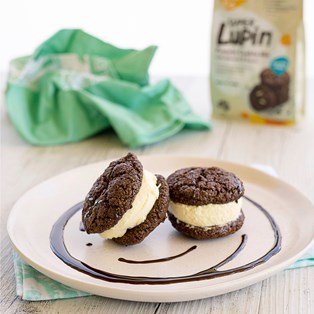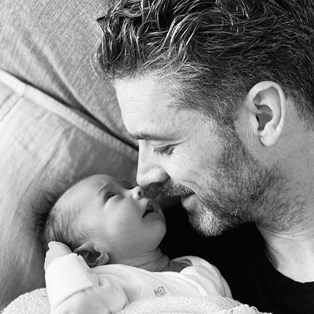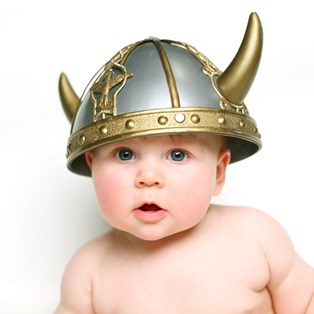Do Blue Heelers, like the family from Bluey, make good family pets?

Vet, Dr. Chantelle McGowan shares everything you need to know about owning a Blue Heeler
By Practical Parenting Team
April 04 2023
In 2018 a little old ABC TV cartoon about a 6yo Blue Heeler named Bluey and her family took not only Australia, but the world by storm. Bluey, her sister Bingo and their parents Bandit and Chilli have become household names and a love for Blue Heeler dogs soon followed.
However if you've found a new interest in these gorgeous Australian working dogs and are considering one as a pet there are a few things you should know first.
"When armed with insight, Blue Heeler’s can form wonderfully strong bond with their families however a good working dog does not always translate into domestic life," says Dr. Chantelle McGowan, from Royal Canin.
Read the suggestions from Dr. Chantelle McGowan below for things to keep in mind if you're considering bringing a Blue Heeler int your family home.
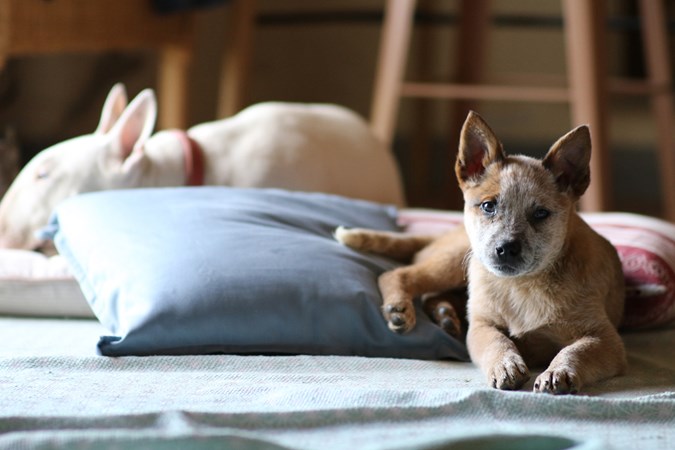
Working dogs are smart, but might not be suitable for every family. (Image: Getty)
What are the key characteristics of a Blue Heeler?
- Blue Heelers tend to be very reactive, which is a strong behaviour trait in working dogs. They are bred to pick up on movements and act fast, usually by snapping at or even nipping the legs of livestock. Outside of a farm however, this translates to strong tendencies towards biting, poor impulse control, and high working drive – meaning they need a lot of stimulation.
- They love being out and about with their owners. Mentally stimulating activities such as nose work, calm obedience training and slow agility are great for Blue Heelers as these activities fulfill their need to ‘work’ but don’t overstimulate or create a situation where nipping or impulsive behaviour is likely.
- Blue Heelers are very smart and in a supportive environment will pick up commands easily – they respond well to training and enjoy the predictability of training exercises.
- They are often affectionate with their caregivers or primary owner. As a working dog, they’re used to overseeing other animals and can have a commanding or stubborn nature.
- They are not prone to many genetic health issues, however they require regular vet visits and a tailored nutritional plan for their life stages. As a highly active dog breed, they require a super-premium diet that is nutritionally balanced to fuel their energy needs. Brands like Royal Canin offer tailored nutrition according to characteristics of breed, size and age to ensure your pet enjoys the best health possible.

Dr. Chantelle McGowan, Royal Canin shares her tips for owning a Blue Heeler as a pet. (Image: Supplied)
Are Blue Heelers kid-friendly pets?
- Blue Heelers tend to be better with older children, over 10 years of age. Young children are unpredictable in the eyes of a Blue Heeler in their noise and movements and this makes the Blue Heeler feel unsure.
- Their working traits overlap with anxious tendencies and they are usually suspicious towards unfamiliar people and pets – this can also include friends who visit your home, but especially young children. Never leave a young child unsupervised with any dog, but especially Blue Heelers.
- Blue Heelers usually adapt best to a family with children as a puppy. During this particular socialisation period, the puppy is around the children from the beginning and quickly perceives kids as part of their caregiving group.
- Blue Heelers love company and do well in a family environment where they are an active companion for the family, so long as they have a safe space to retreat to if they need a breather.
- They can adapt to family life, however it is crucial to be able to identify and seek the right help for any signs of reactivity or herding behaviour.
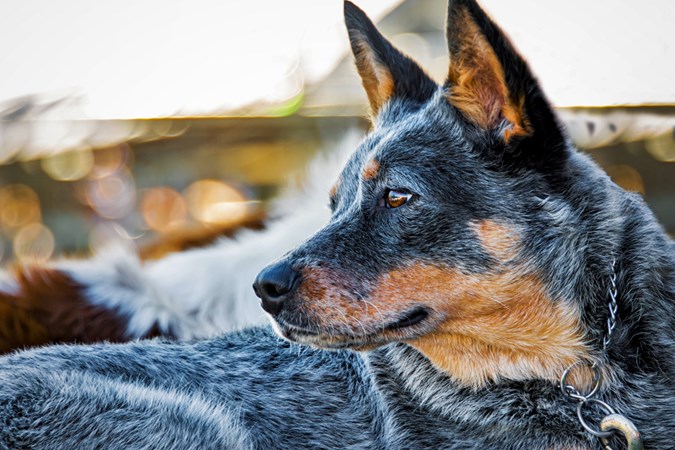
Blue Heelers require bursts of exercise and lots of stimulation. (Image: Supplied)
What kind of family / living situation would a Blue best be suited to?
- Housing Blue Heelers with prey species (cats, rabbits, birds etc.) is often risky, as is young children. They often are best suited to solo-pet life with teenagers/adults, or another compatible dog.
- A Blue Heeler needs a confident owner who has experience in positive communication with pets, or willing to undertake sessions with a positive-reinforcement only trainer. Punitive or ‘balanced’ training shuts down early-warning communication from your dog and drastically increases the risk of ‘no warning’ bites and displays of aggression.
- Rarely suited to apartment living, a house with a yard is ideal. They require bursts of exercise and lots of stimulation.
- They do best with a routine.
- Families must be committed to learning the body language and communication training of Blue Heelers to ensure behaviour issues do not arise.
For more information on tailored nutrition for your pet, visit Royal Canin at www.royalcanin.com/au




